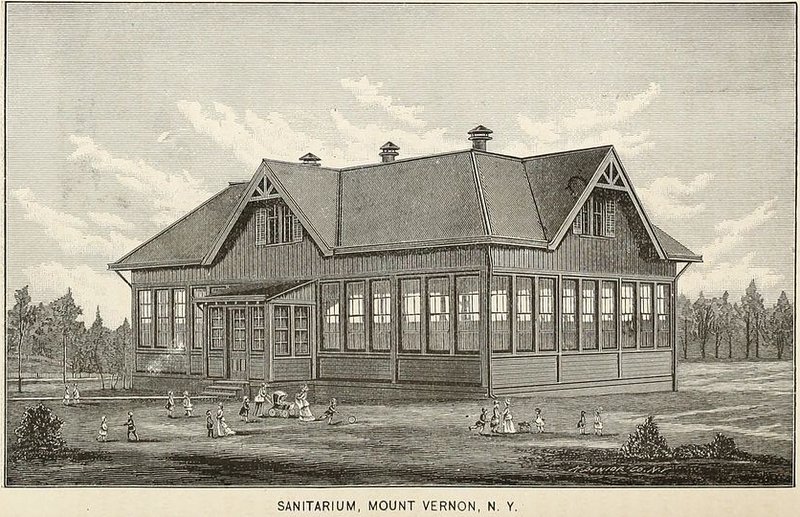3. Diphtheria
 From the 1884 New York Infant Asylum Report. Image from Wikimedia Commons.
From the 1884 New York Infant Asylum Report. Image from Wikimedia Commons.
Diphtheria, a bacterial disease that causes a thick buildup in the back of throat, killed thousands of New Yorkers, especially children, throughout the late 19th and early 20th centuries. By the late 1800s, a diphtheria vaccine was developed, but it didn’t become widely available until the 1920s. Diphtheria had two major waves in 1881 and 1887, killing 4,900 and 4,500 people respectively. By the 1890s, the death rate slowed, yet many families were reluctant to send their children to school due to the disease’s highly contagious nature.
The above image comes from the 1884 New York Infant Aslym report where the President of the Asylum wrote next to the engraving, “It will be noticed that the number sheltered in 1887 is 1165 against 1198 in 1886. This is accounted for by the reports of the Resident Physicians both at Sixty-first street and at Mt. Vernon show-ing the outbreak of diptheria which though soon checked compelled a quarantine which prevented for a period the receiving of further inmates. All this is now happily at an end, and we are going on with our work untrammelled by any such unfortunate restrictions.”





